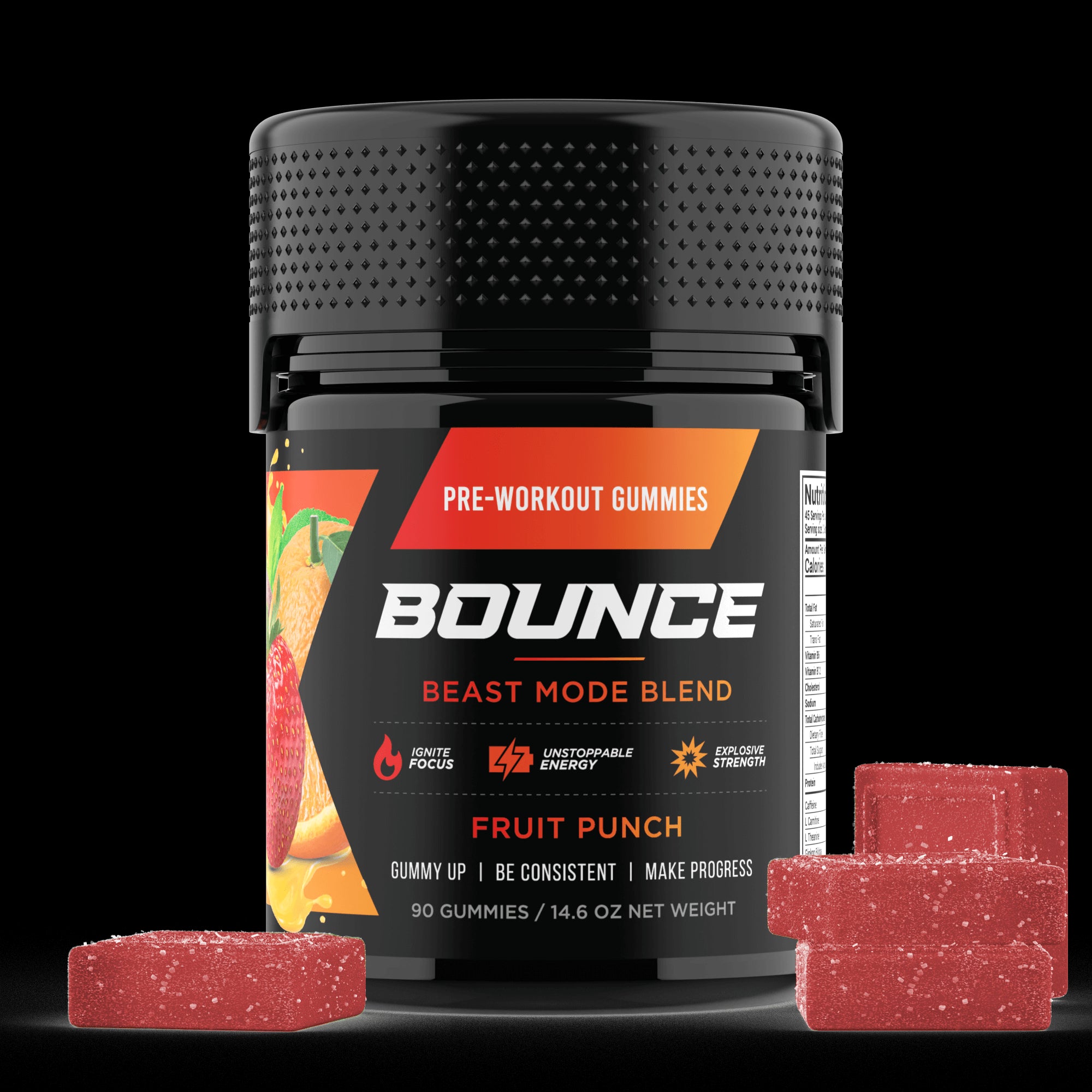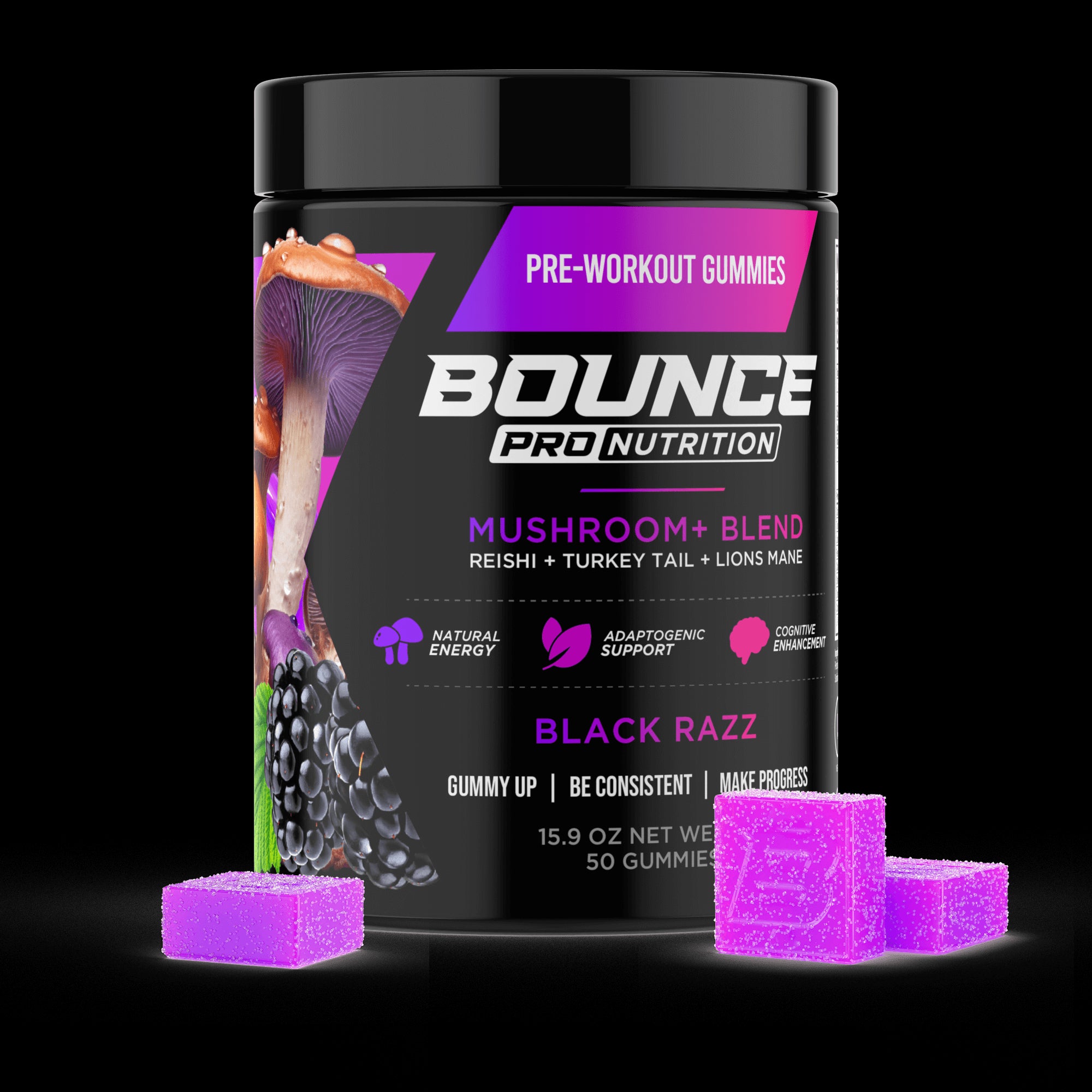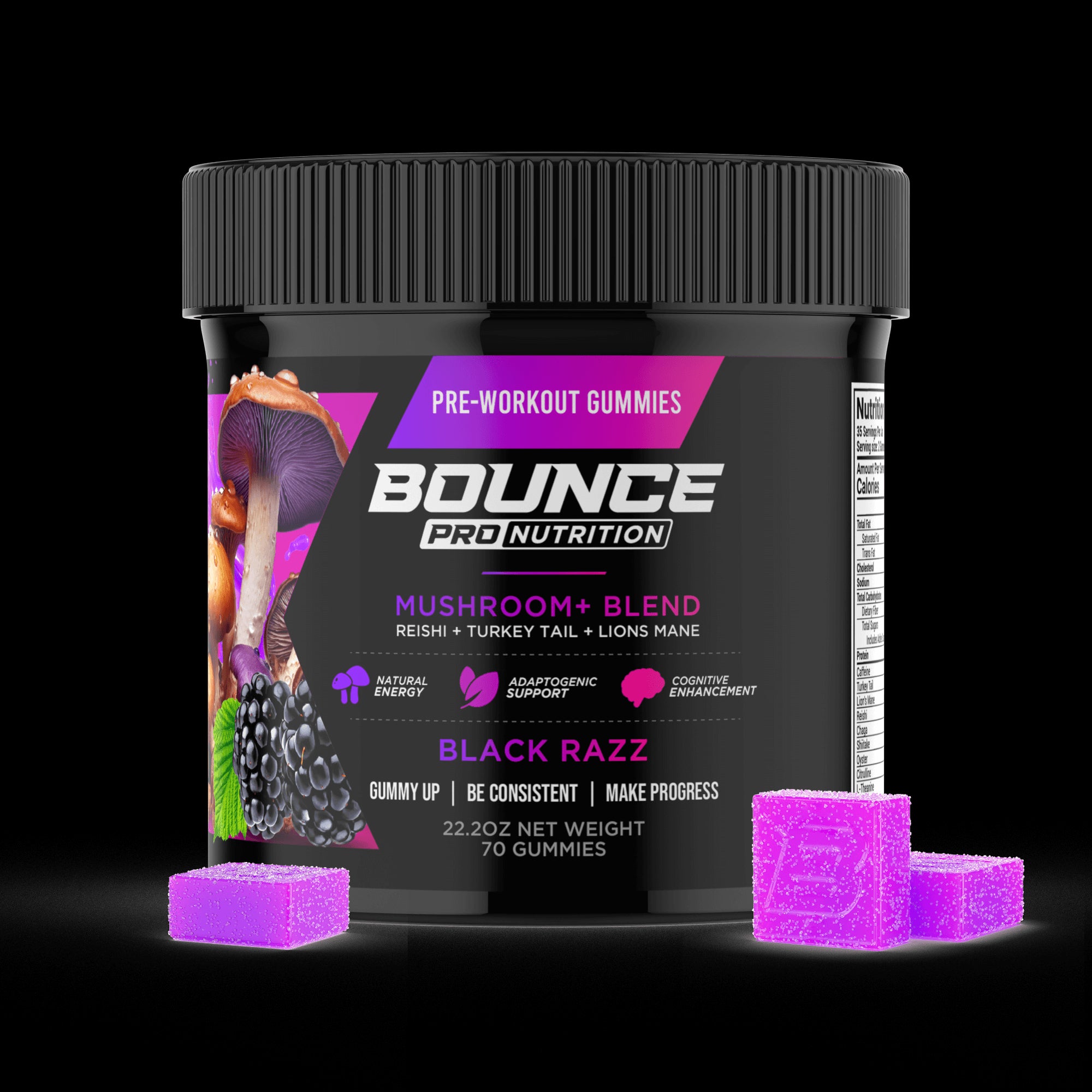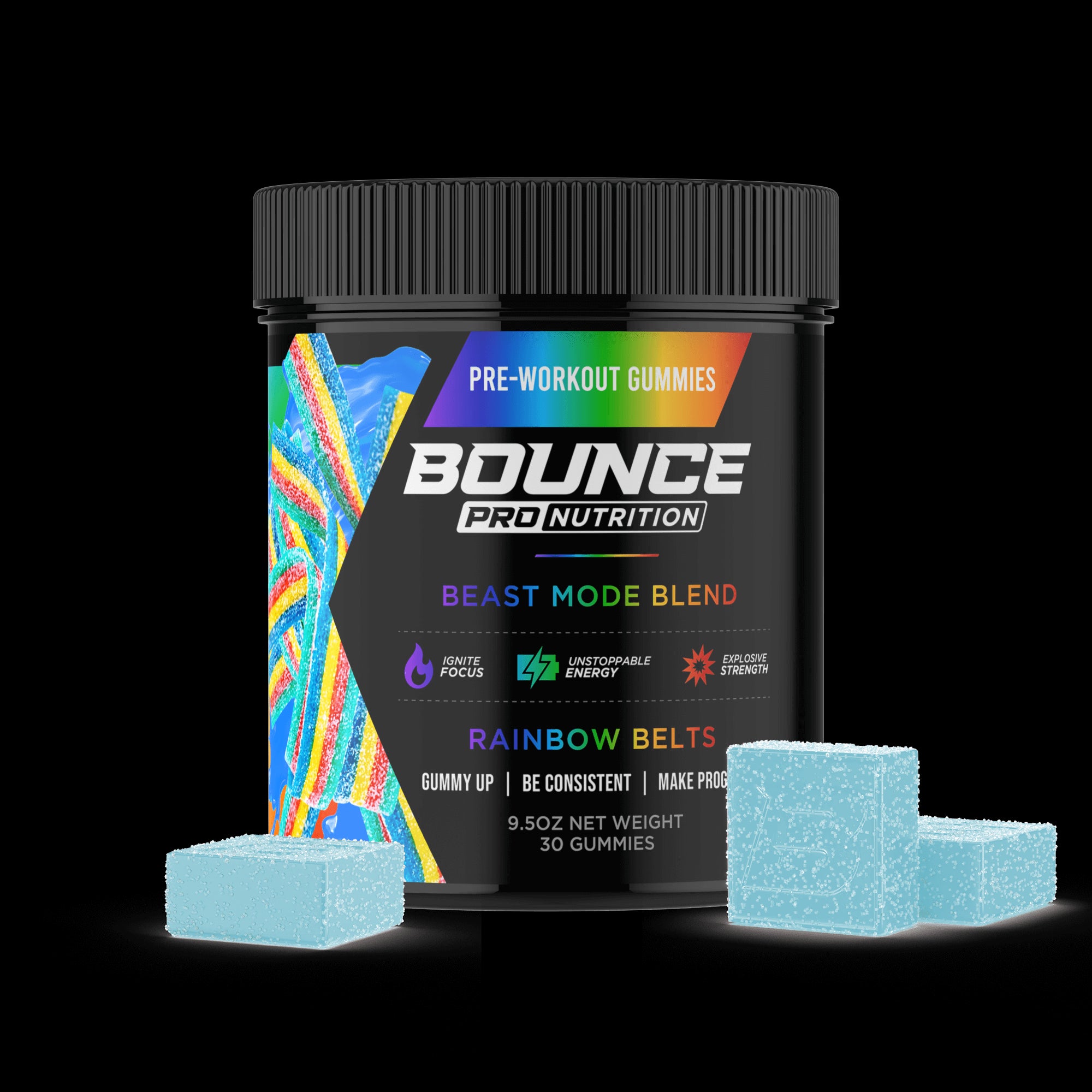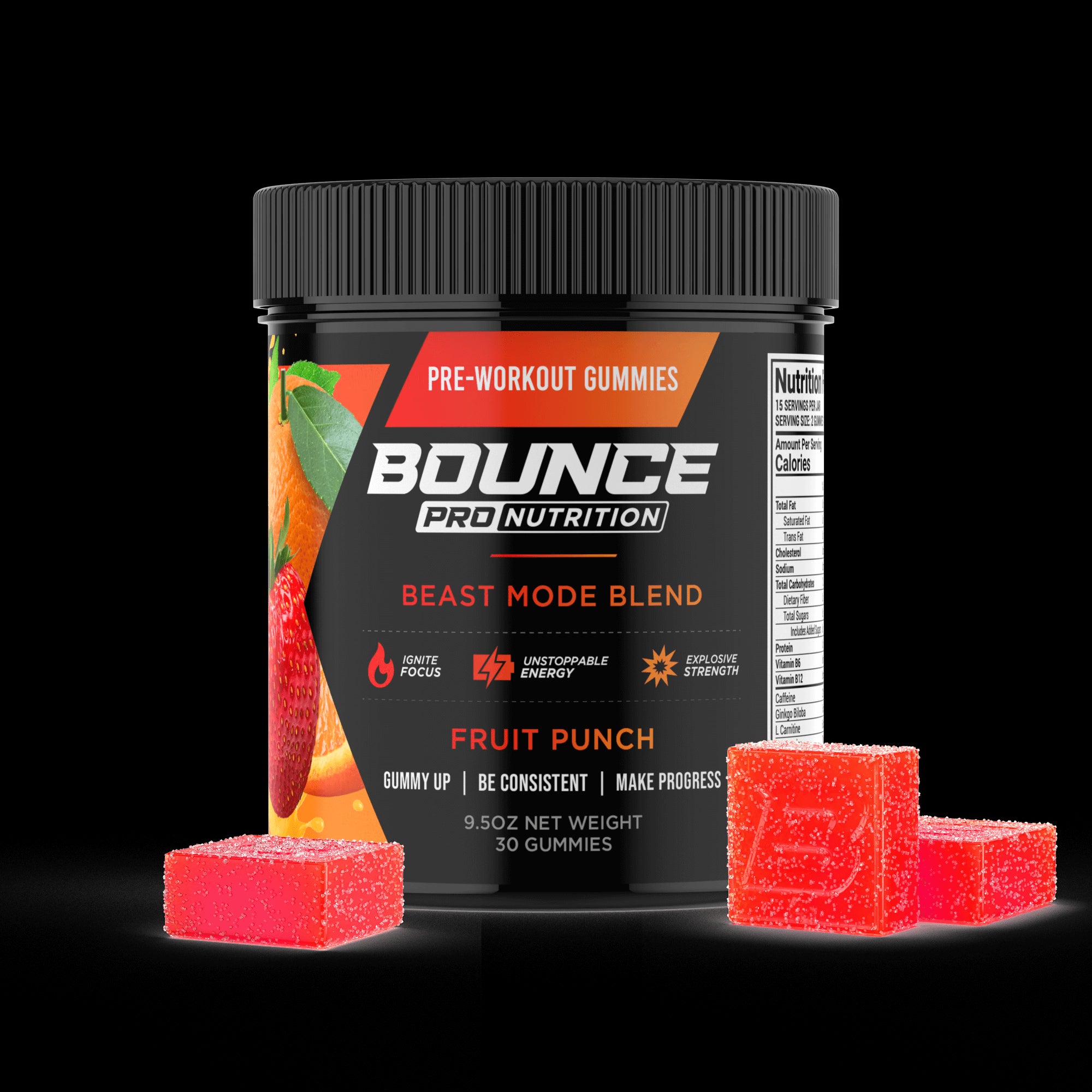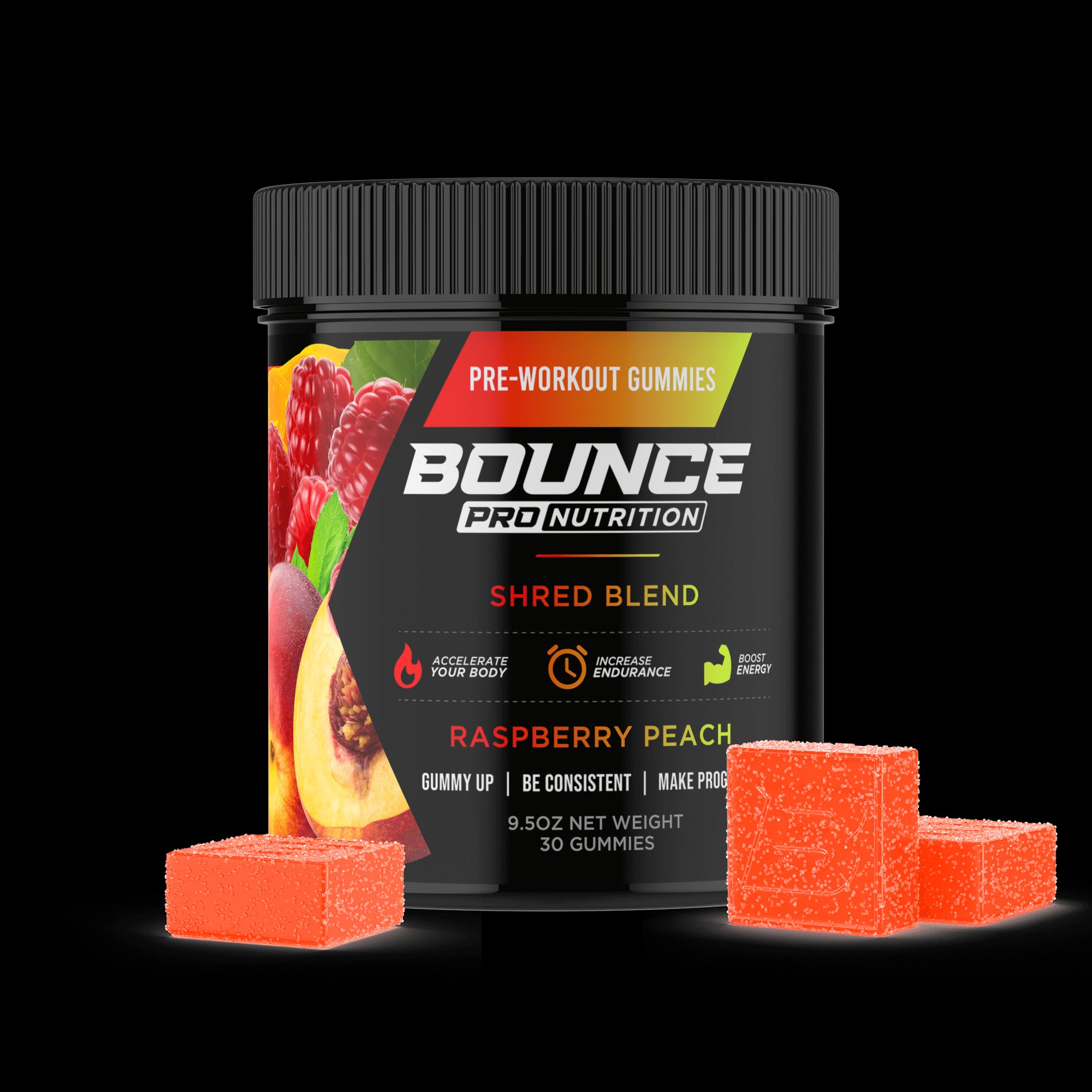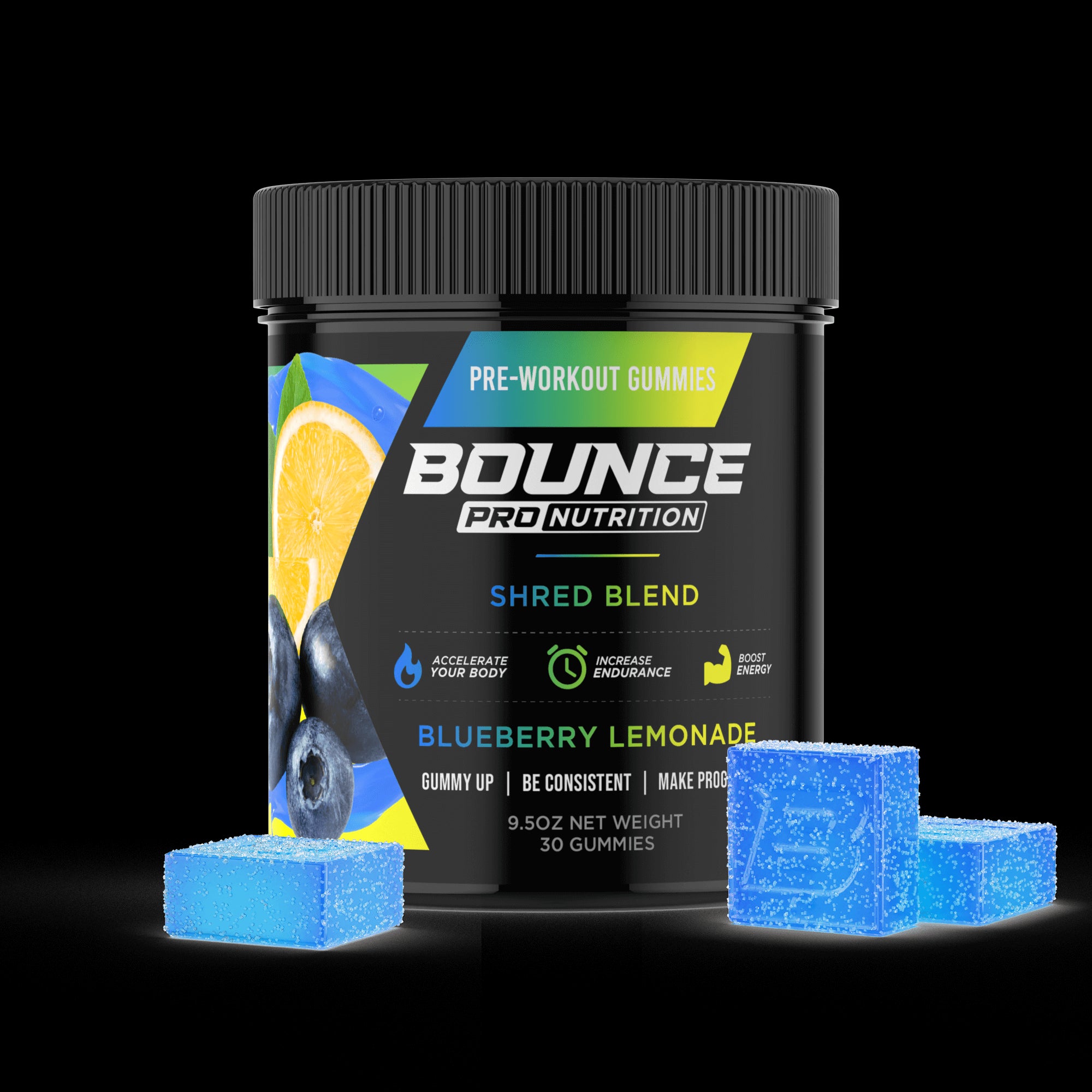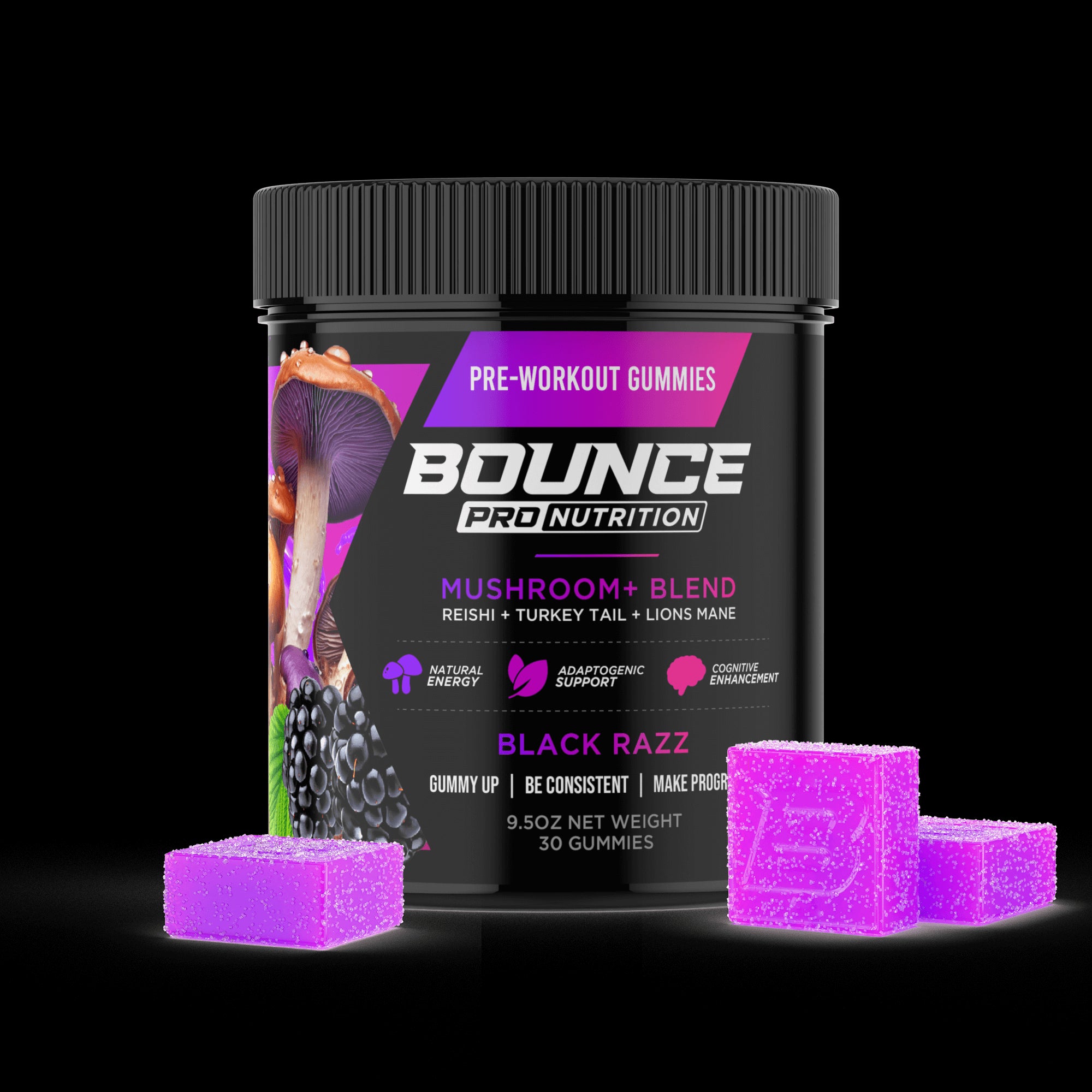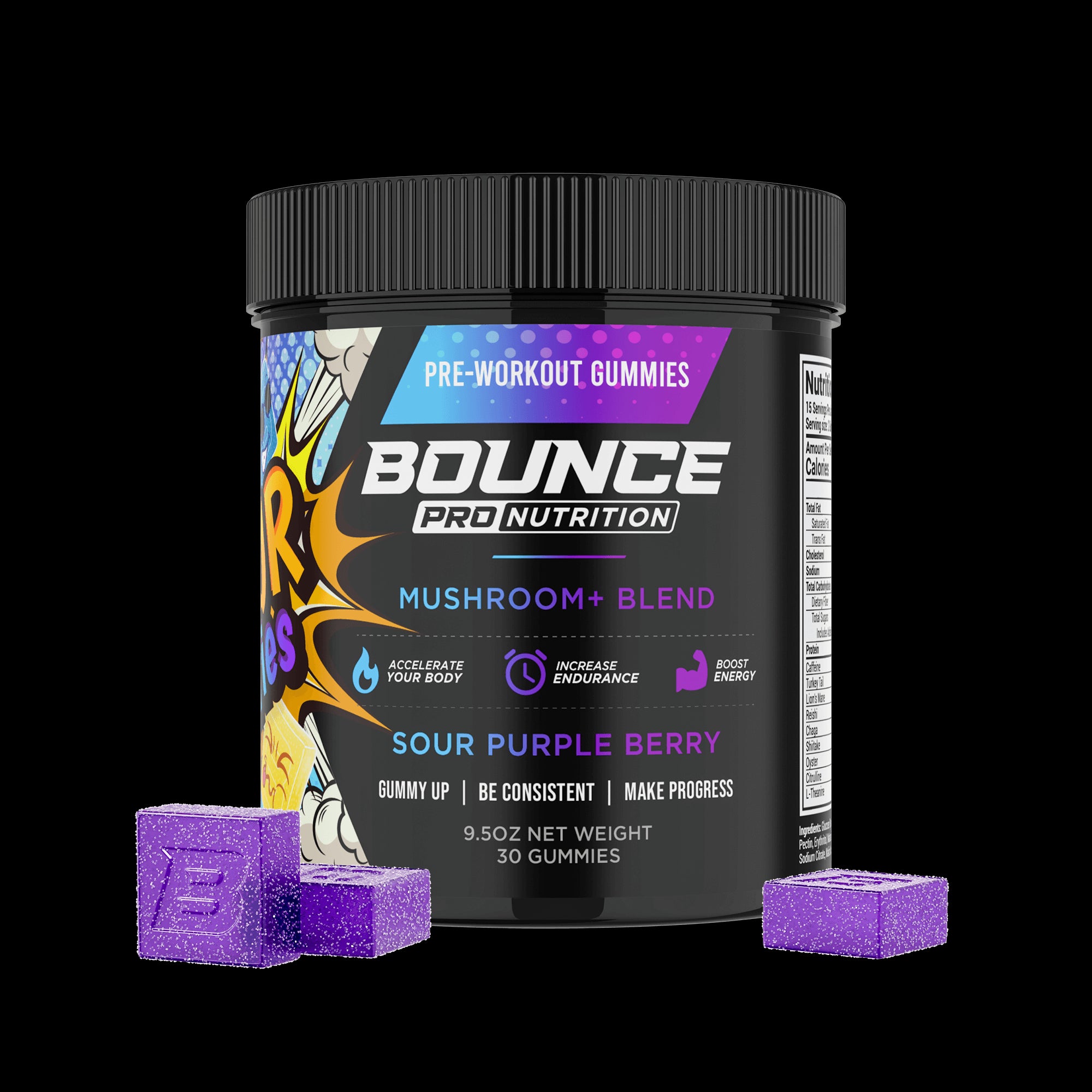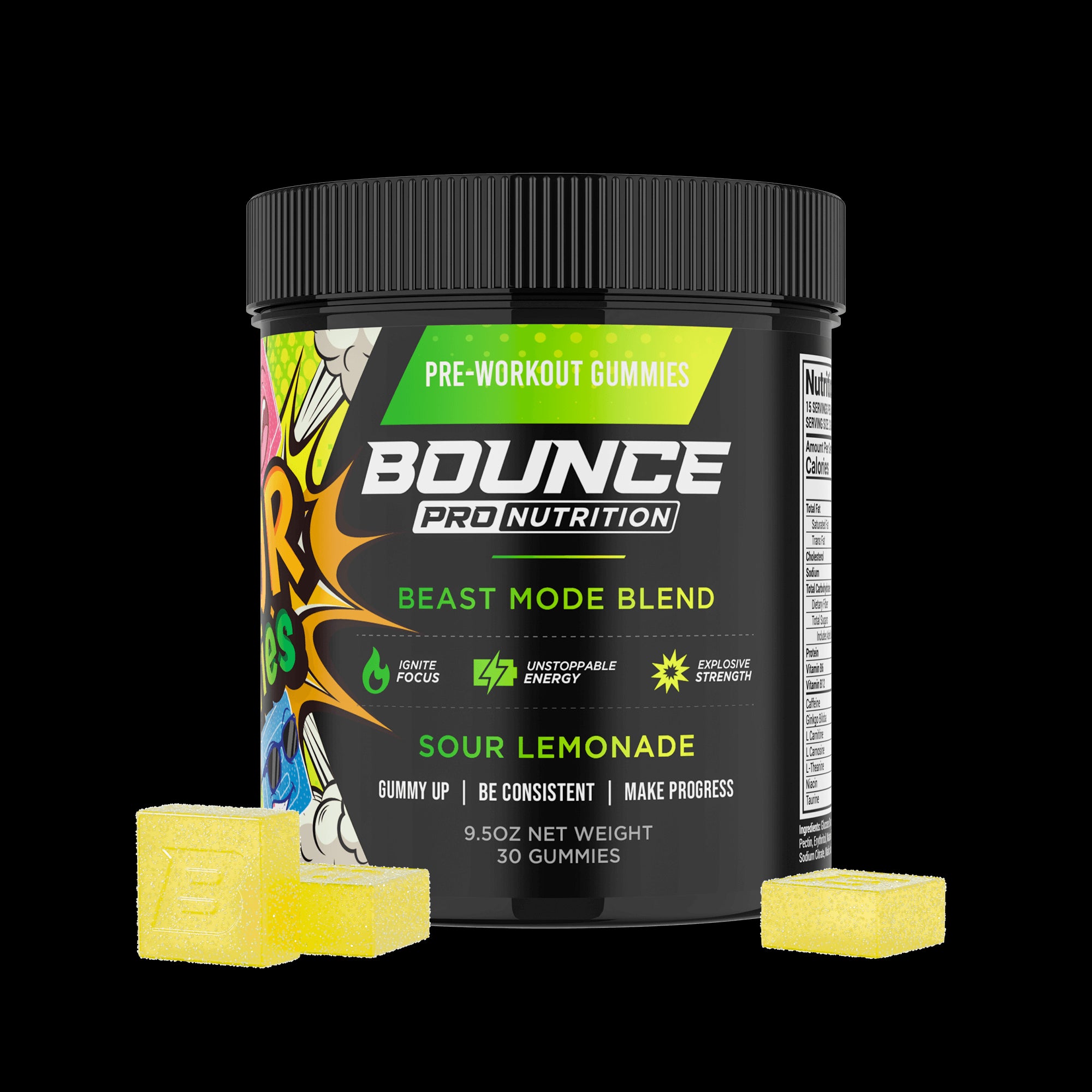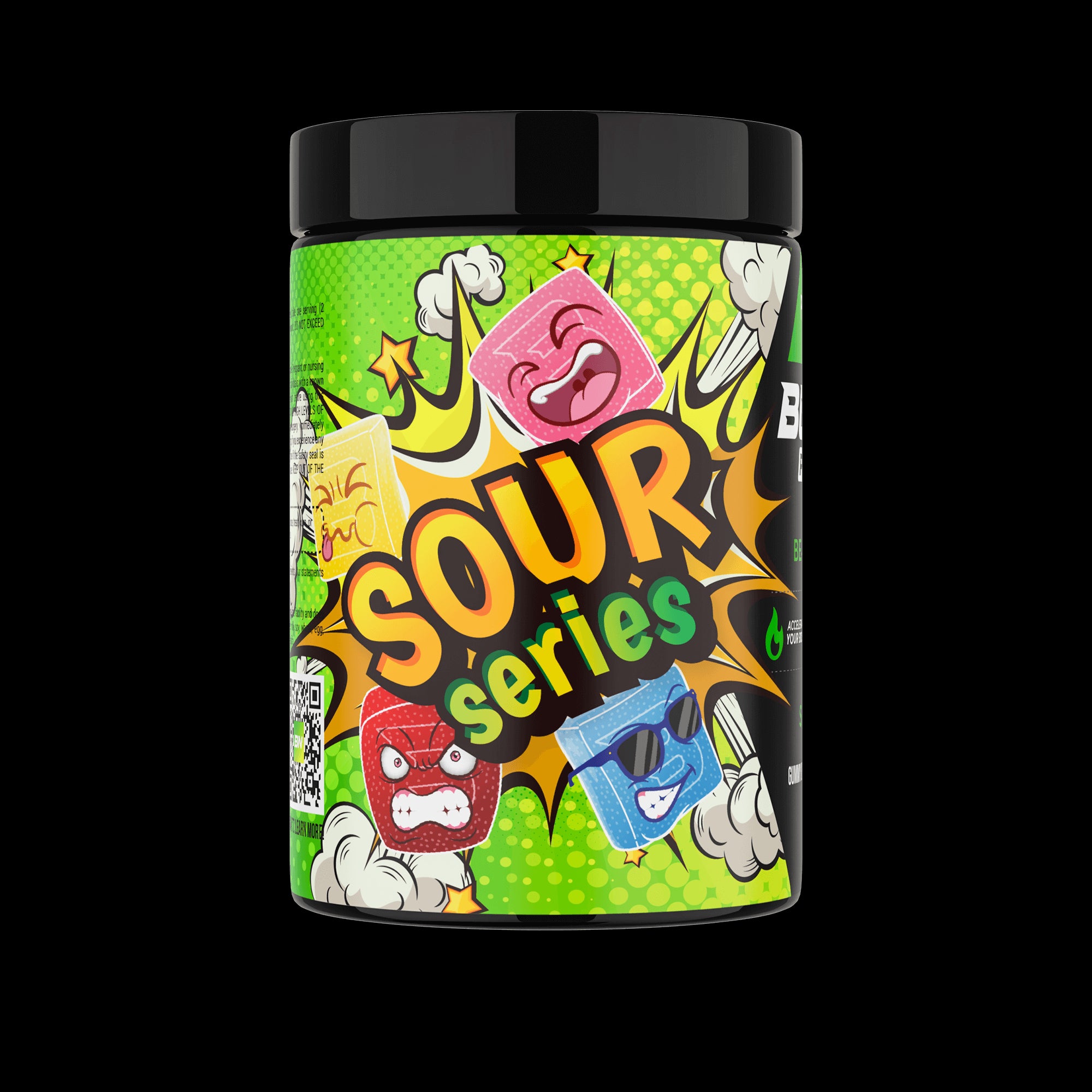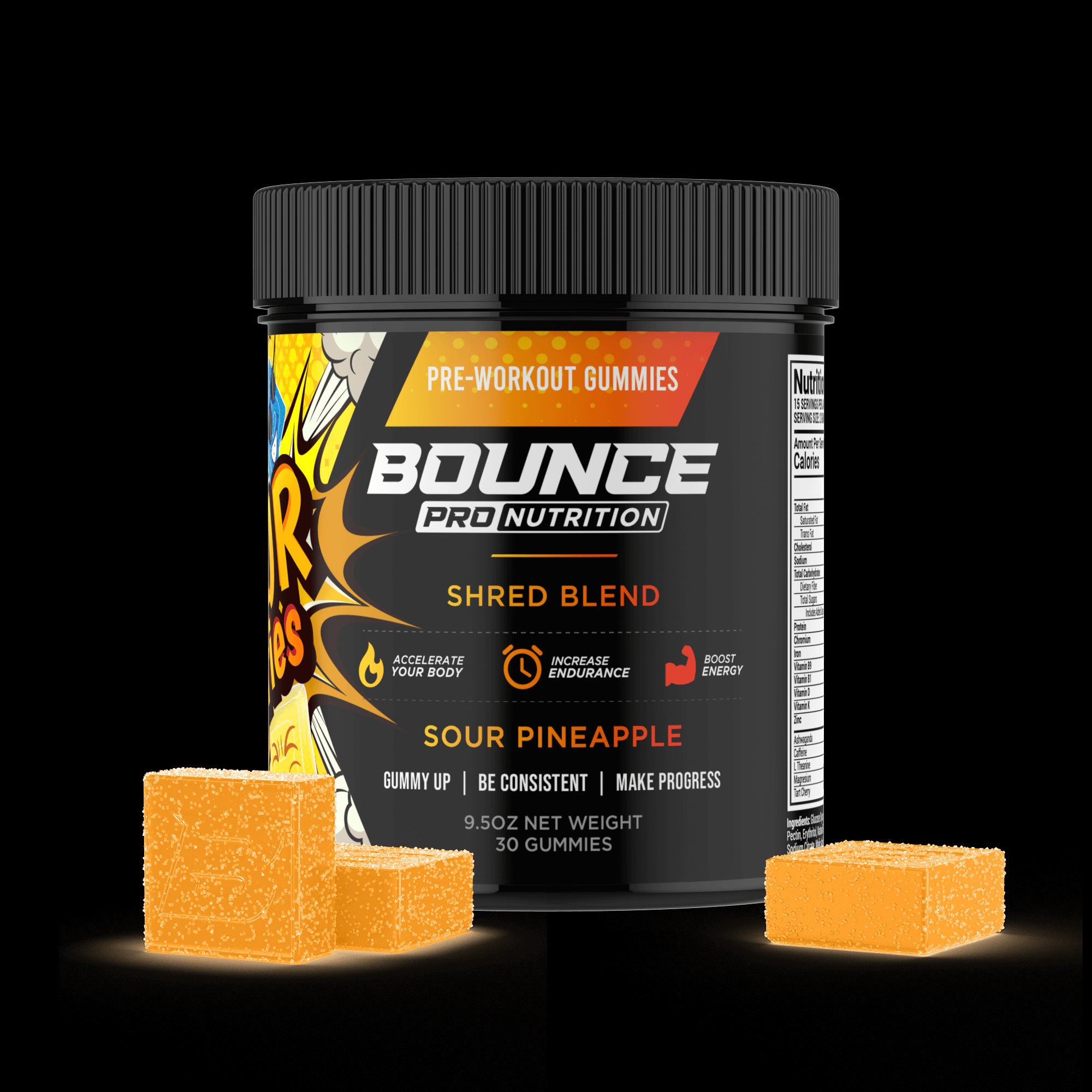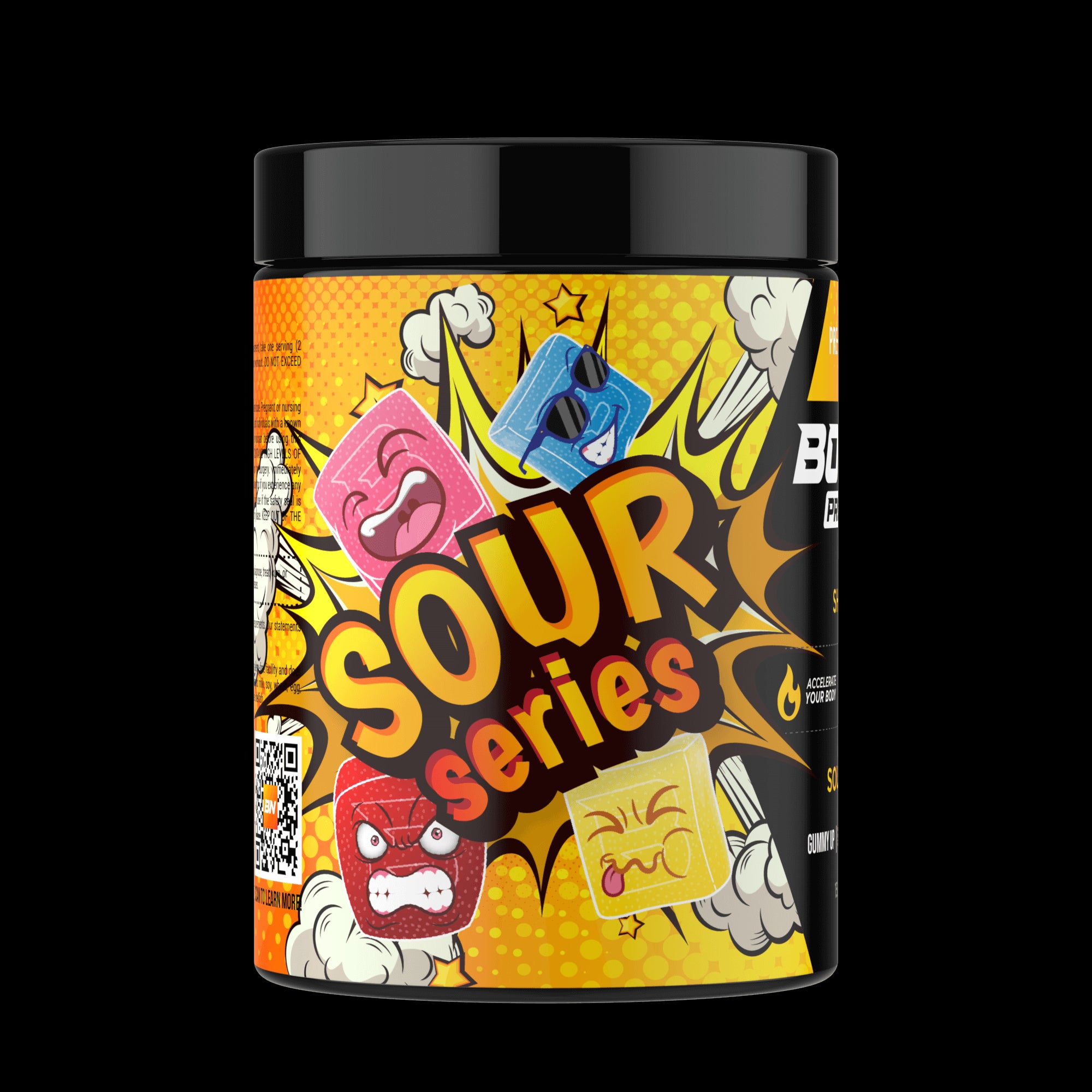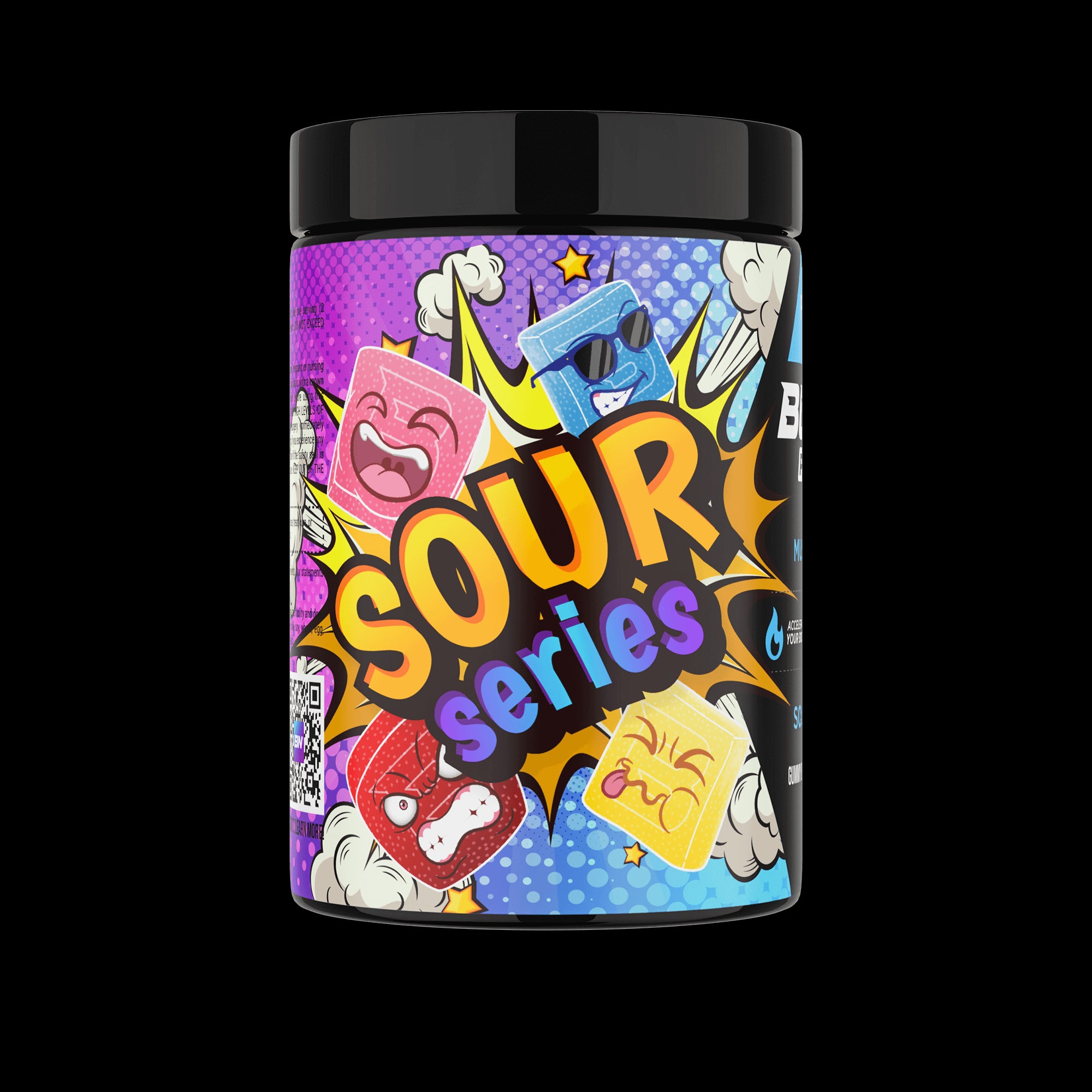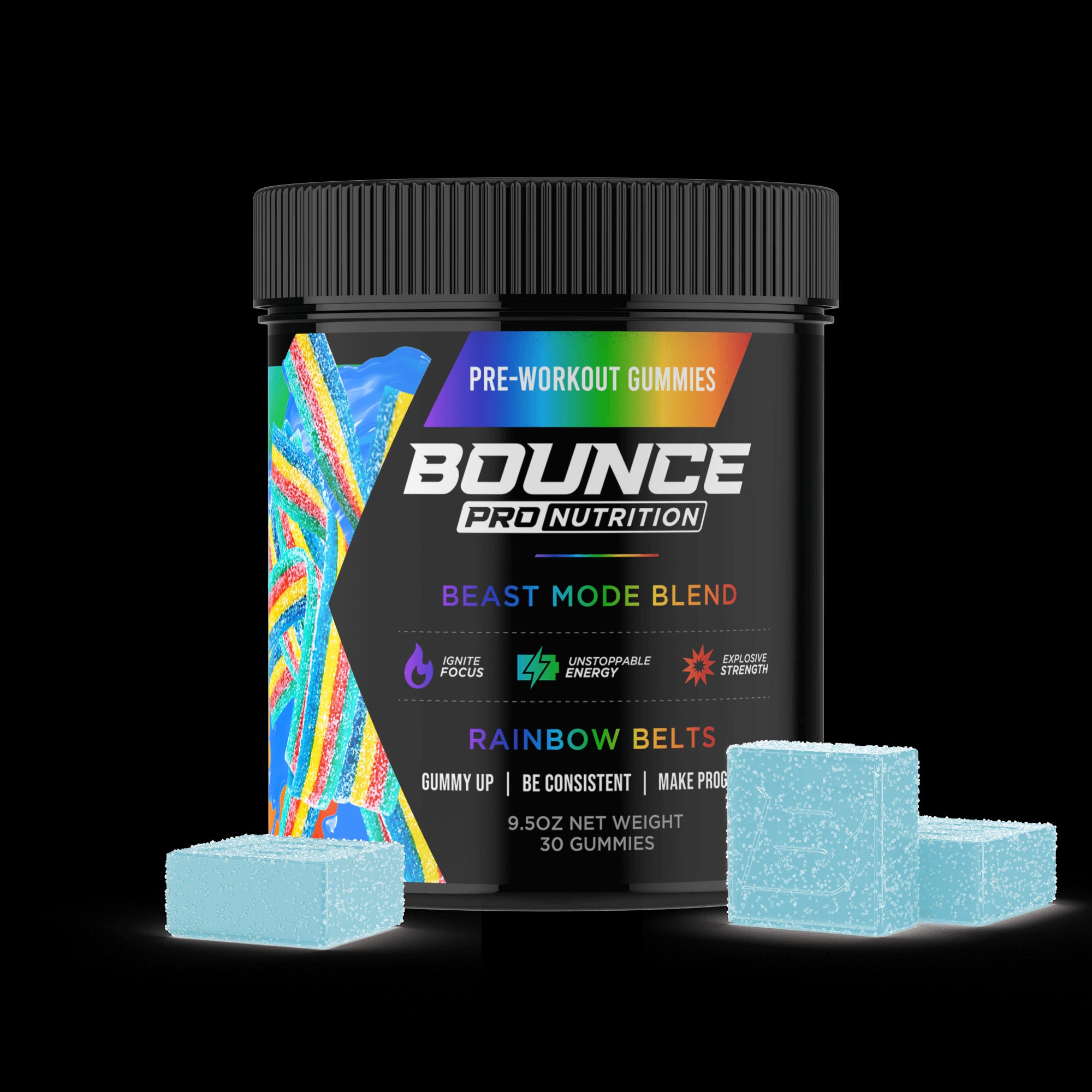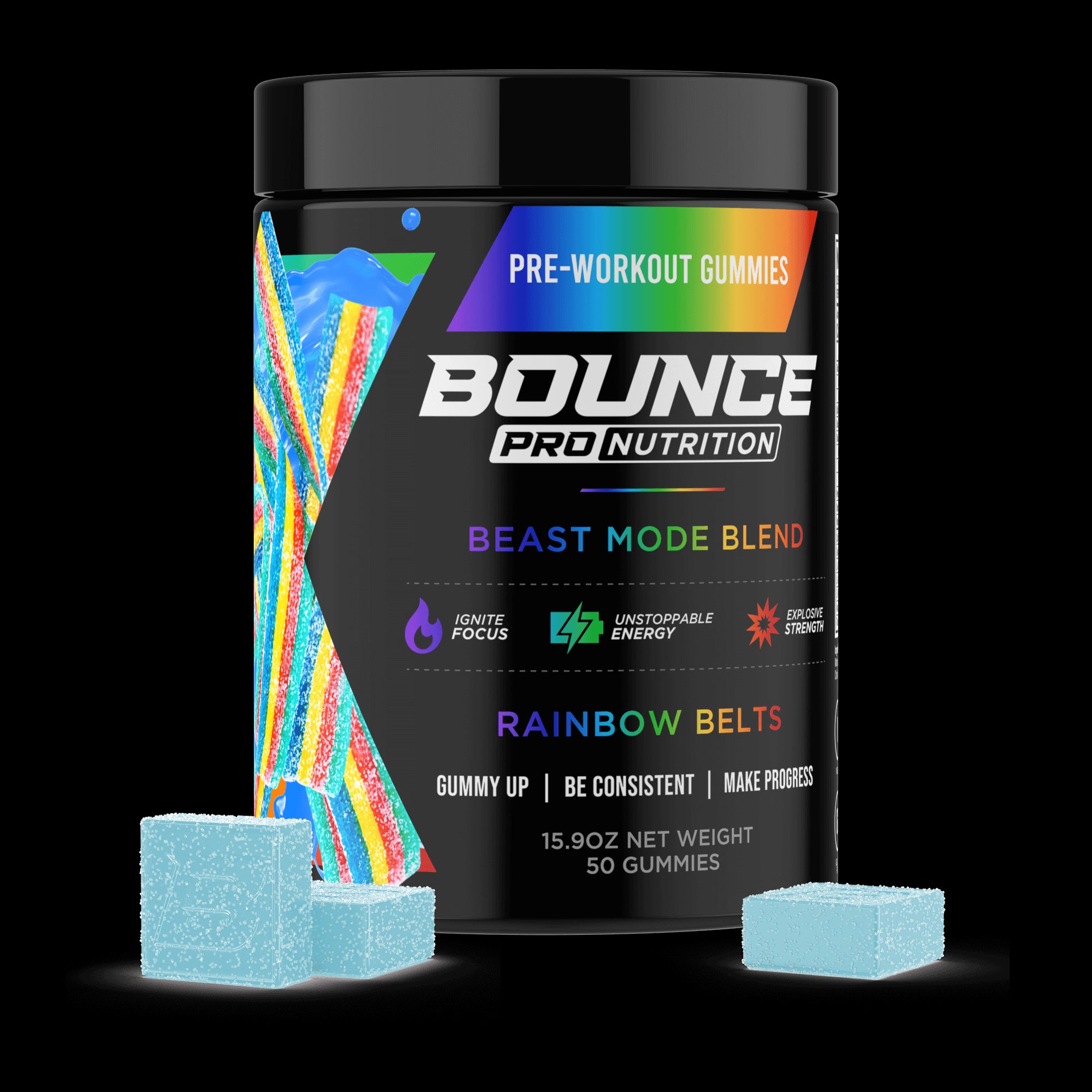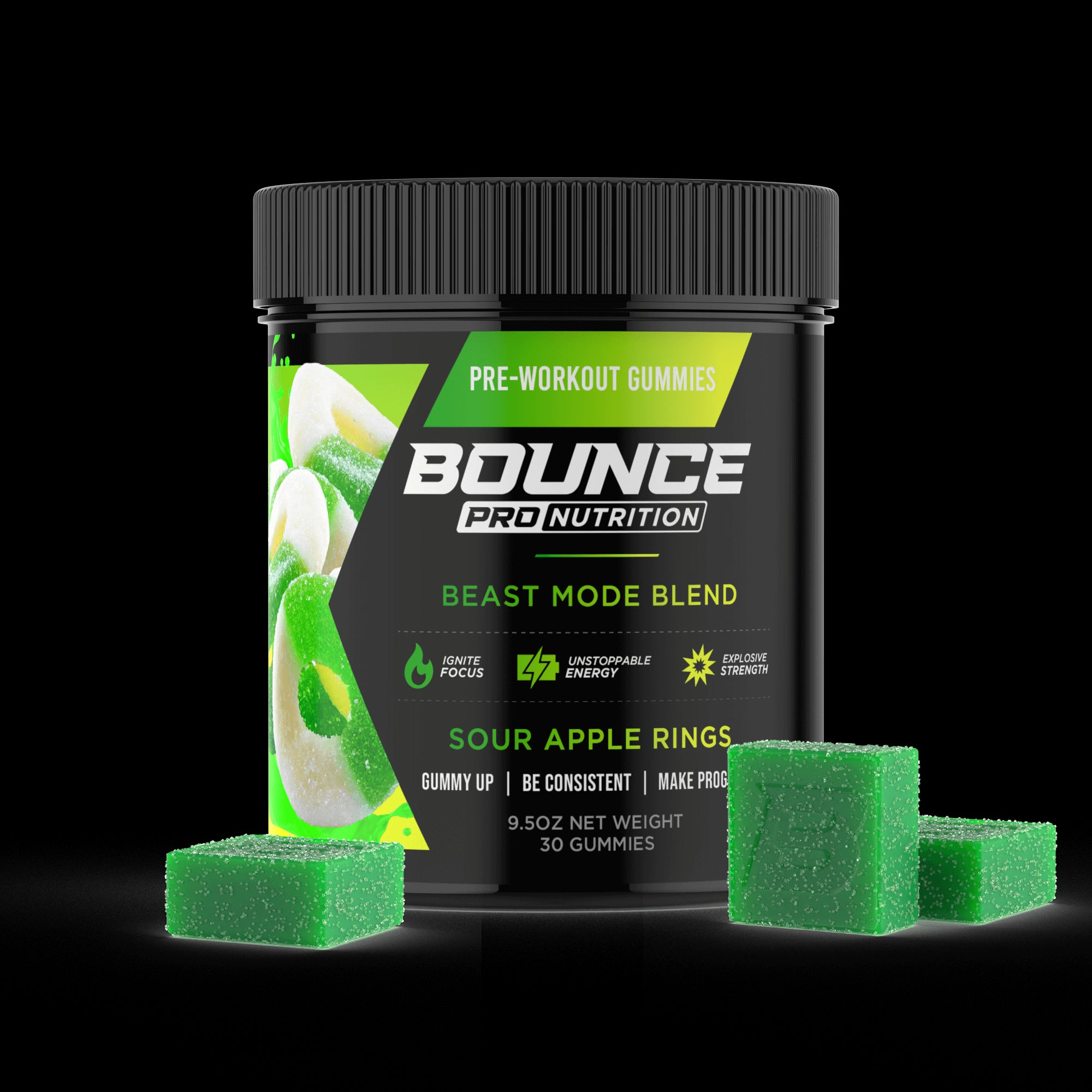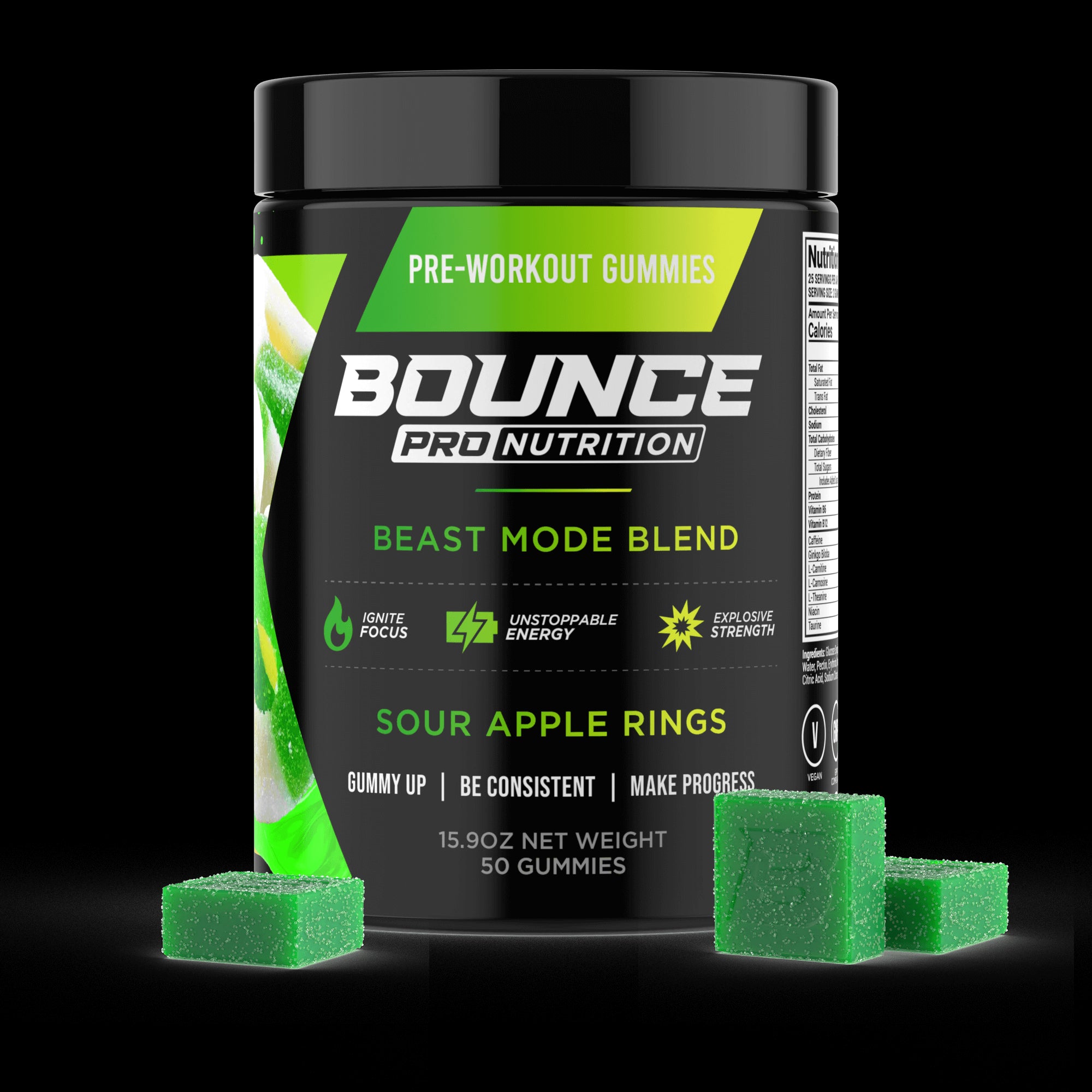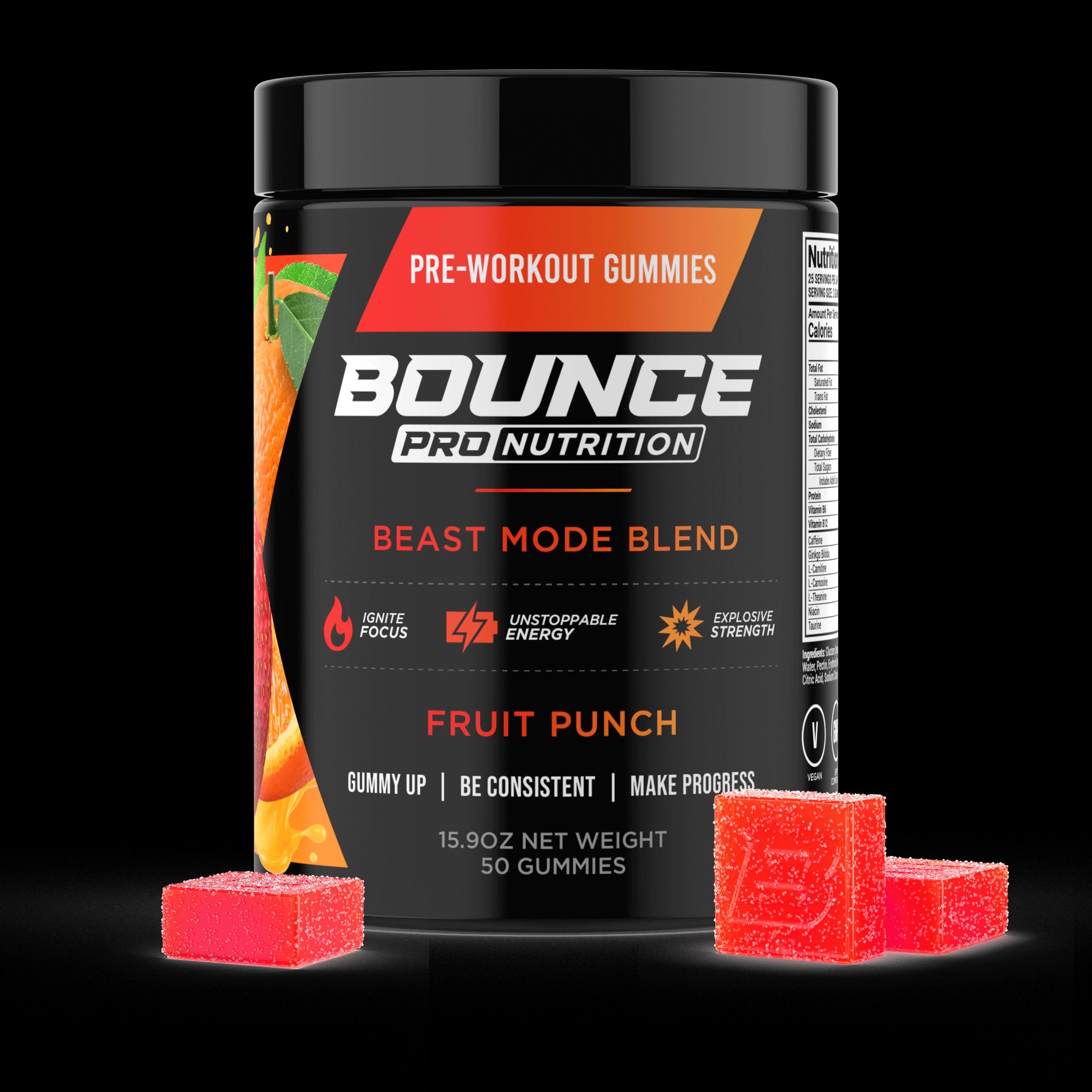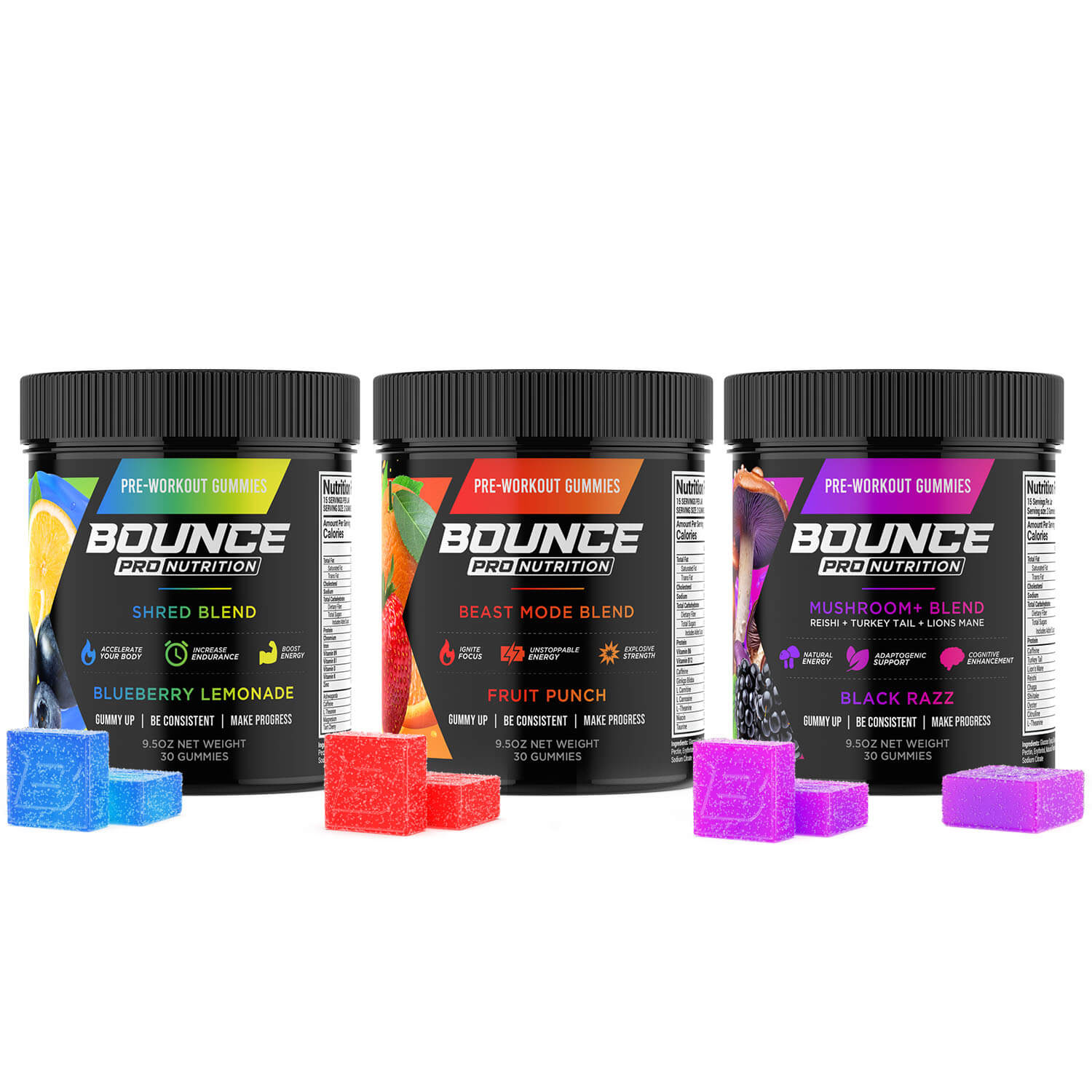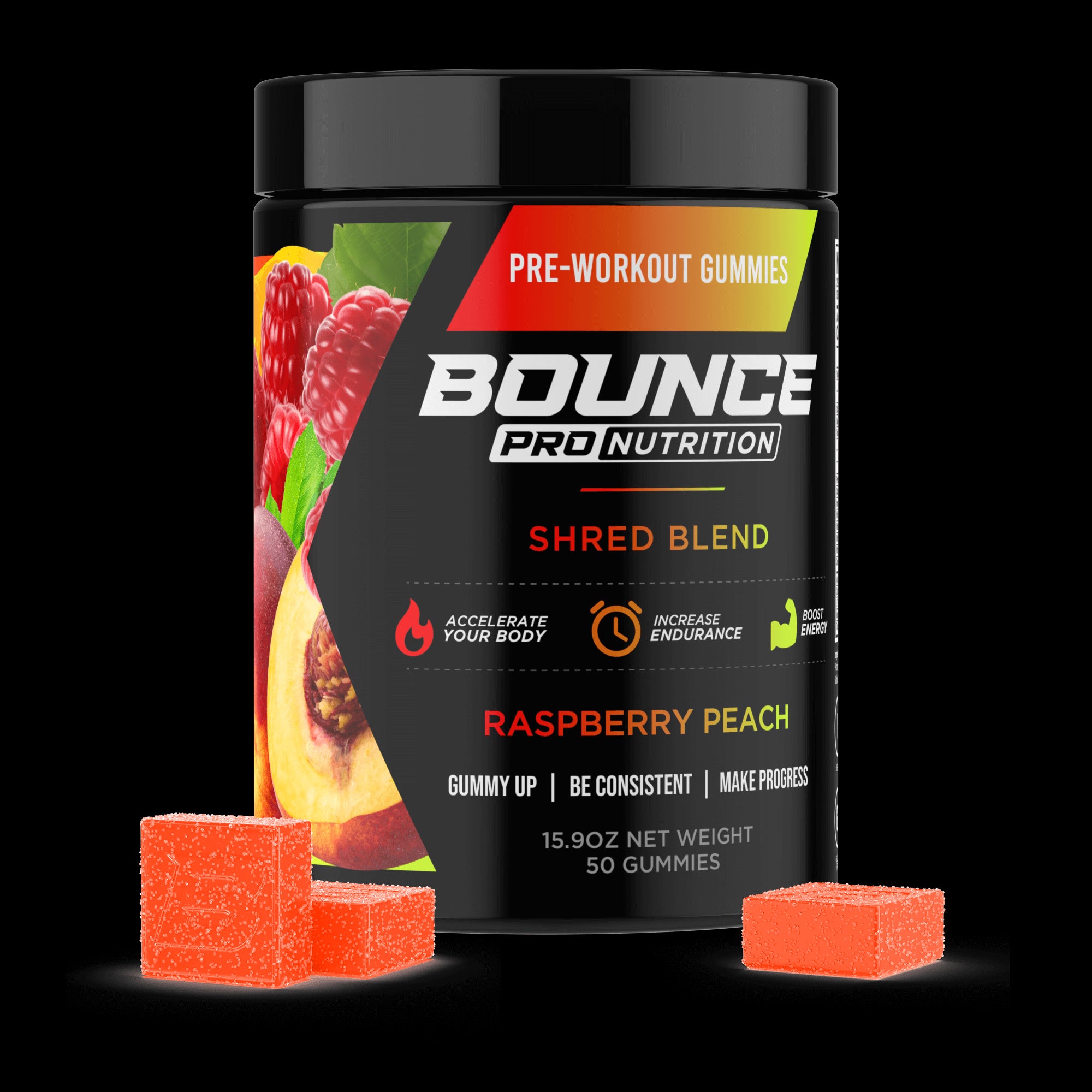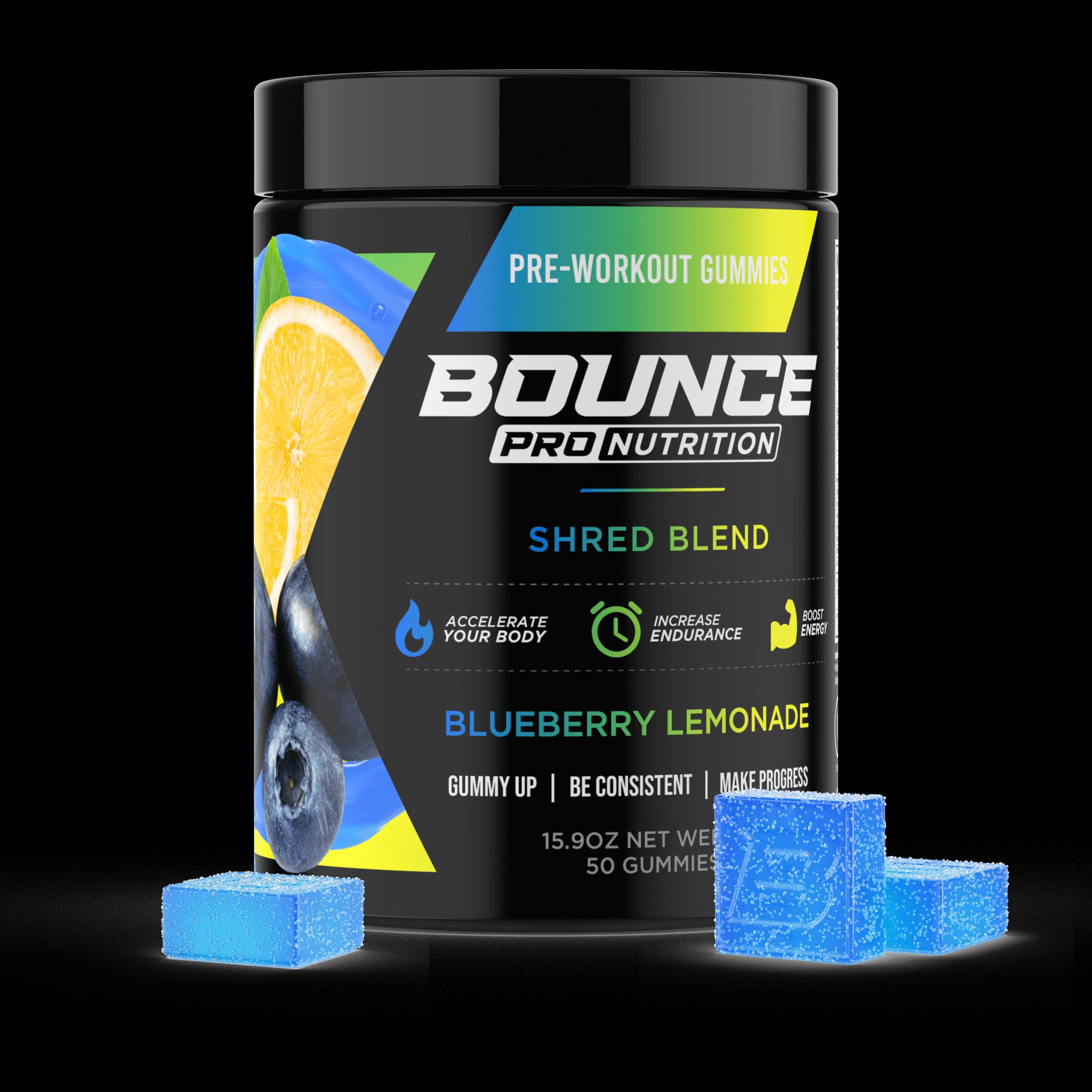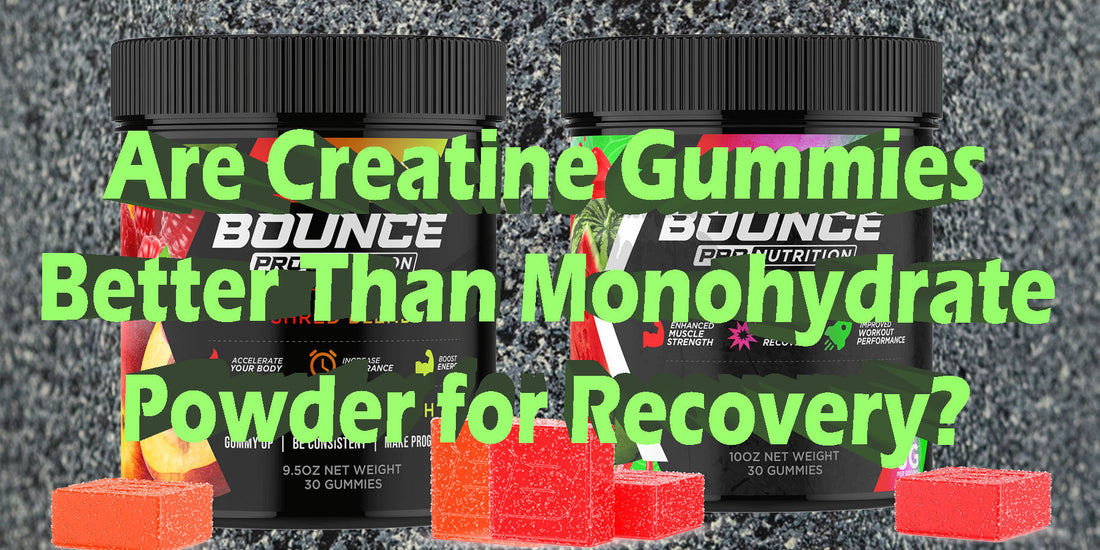The relentless pursuit of optimization is the heartbeat of the fitness world. Every athlete, from the seasoned professional to the weekend warrior, is on a quest for that extra edge that can turn effort into tangible results. For decades, the conversation around post-workout recovery has been dominated by a few trusted staples, with the humble shaker bottle of creatine monohydrate reigning supreme. It has been the reliable, scientifically-backed workhorse in the arsenal of millions.
But the supplement landscape is in a constant state of evolution. That’s right, a vibrant and convenient challenger has emerged, transforming a gritty ritual into a simple, chewable treat: creatine gummies. This innovation has sparked a compelling new question that cuts to the core of our post-workout strategy: when it comes to recovery, does the new-school convenience of a gummy actually outperform the old-school efficacy of powder?
You see, the answer isn't as simple as you might think, involving a fascinating interplay between biology, chemistry, and human behavior that could reshape how you approach your recovery.
TO BUY CREATINE GUMMIES CLICK HERE
What You Initially Need to Know About Recovery When Working Out
Before we can compare two forms of a supplement, it's crucial to understand the very process they aim to support. Workout recovery is the essential biological process where your body repairs, rebuilds, and strengthens itself after the stress of physical exertion. It is not merely about resting on the couch; it's an active and complex series of events that are fundamental for adapting to exercise and improving your fitness over time.
Think of it this way: when you engage in a workout, especially an intense one, you are purposefully creating microscopic damage to your muscle fibers. This isn't a bad thing; in fact, it's the very stimulus your body needs to grow and adapt. Recovery is the phase where your body's internal construction crew gets to work, mending these tiny tears. In anticipation of the next time you impose that stress, it rebuilds the muscles to be even stronger and more resilient than they were before. This remarkable phenomenon is known in the exercise science world as "supercompensation".
Without giving your body adequate time and resources for recovery, you effectively rob yourself of the benefits of your hard work. The repair and adaptation process remains incomplete, which can lead to a host of negative outcomes:
-
Decreased Performance: Your muscles won't be fully repaired or refueled for the next session, which can lead to noticeable reductions in your strength, endurance, and power output.
-
Increased Risk of Injury: Continuously training fatigued and under-recovered muscles makes them far more susceptible to strains, sprains, and other frustrating injuries that can set you back for weeks.
-
Persistent Fatigue and Soreness: When your body can't efficiently clear out metabolic byproducts and repair tissue damage, you can experience prolonged and excessive muscle soreness and a pervasive sense of fatigue.
-
Burnout: The combination of physical and mental fatigue can quickly lead to burnout, crushing your motivation and making it incredibly difficult to maintain consistency with your fitness routine.
In essence, recovery is the period when the real magic of your workout happens. It’s when your body is finally able to replenish its energy stores, patch up damaged tissues, manage inflammation, and ultimately enhance its overall physical capacity. Viewing recovery as an indispensable and active part of your training regimen is the key to ensuring your efforts in the gym translate into real, sustainable progress and long-term health.
How to Naturally Optimize Your Workout Recovery
By integrating these recovery strategies into your fitness routine, you'll not only reduce soreness and prevent injuries but also enhance your performance and achieve your fitness goals more effectively:
-
Prioritize Sleep: Sleep is arguably the most vital component of recovery. During deep sleep, your body releases human growth hormone (HGH), which is essential for muscle repair and growth. Adequate sleep also helps regulate other hormones, reduce inflammation, and replenish muscle glycogen stores (your body's energy source). Aim for 7-9 hours of quality sleep each night.
-
Fuel Your Body with Proper Nutrition: What you eat after a workout significantly impacts how well your muscles recover and rebuild. For instance, protein and carbohydrates are the power duo for recovery. Protein provides the amino acids needed to repair and grow muscle tissue, while carbohydrates replenish depleted glycogen stores for your next workout. Aim for a mix of 20-40 grams of protein and carbohydrates within two hours of exercising. Many foods can even help reduce post-workout soreness and inflammation. Also, you need to avoid added sugar and alcohol, as these can contribute to inflammation and hinder your recovery.
-
Stay Hydrated: Water is crucial for muscle recovery. It helps transport oxygen and nutrients to your muscles, flushes out metabolic waste products like lactic acid, and aids in protein synthesis. Before your workout, it’s recommended you drink at least 17 ounces of water about 2 hours beforehand. During your workout, it’s recommended you drink 7-10 ounces every 10-20 minutes. After your workout, try to aim to drink 16-24 ounces of water for every pound of body weight lost during exercise, spread out over 2-6 hours. Alos, consider incorporating electrolytes, especially after intense or long workouts, to replenish those lost through sweat.
-
Incorporate Active and Passive Recovery: First, active recover involves low-intensity physical activity that promotes blood flow and helps reduce stiffness without putting additional stress on your body. Examples include walking, gentle cycling, or yoga. Active recovery can help clear metabolic waste faster than complete rest. Passive recovery is true rest, allowing your body to recover with minimal physical exertion. This includes full rest days, massage, foam rolling, and hot/cold therapy (like ice baths or warm baths).
-
Don't Forget Stretching and Mobility: Stretching after a workout can help improve flexibility, reduce stiffness, and gradually lower your heart rate. Foam rolling can also help release muscle tension and knots, increasing blood flow to the muscles.
-
Listen to Your Body: The most important aspect of recovery is paying attention to your body's signals. Signs of inadequate recovery or overtraining include persistent muscle soreness, fatigue, decreased performance, lack of motivation, and sleep disturbances. If you're experiencing these, it's a clear sign you need to prioritize rest and recovery.
Remember, the "gains" often happen outside the gym, when your body is given the chance to repair and rebuild.
Getting to Know Creatine Gummies and Monohydrate Powder
In the world of sports nutrition, creatine stands as one of the most researched and effective supplements available. Historically, accessing its benefits meant dealing with a fine white powder. Today, however, the market offers diverse options, with creatine gummies emerging as a popular, user-friendly alternative to the traditional tub of monohydrate.
Both products aim to deliver the same core ingredient to your muscles, but their form factor, taste, and method of consumption are vastly different. Understanding these differences in delivery systems is the first step in evaluating how each might uniquely contribute to the crucial post-workout recovery process.
Creatine Gummies 101
Creatine gummies represent a major step forward in supplement convenience, fundamentally altering the user experience of taking creatine. They do so by encapsulating a precise dose of creatine, typically monohydrate, within a tasty, chewable format that feels more like a treat than a supplement. This clever design completely sidesteps the common hassles associated with powders—there is no need for measuring scoops, finding a clean shaker bottle, or vigorous mixing to deal with grit and clumps.
The appeal is rooted in this profound simplicity and their candy-like nature, which transforms a daily chore into a quick and enjoyable moment. This evolution from a functional powder to a portable, solid edible signifies a user-centric shift in product design, championing ease of use without compromising the supplement's intended purpose.
The history of the creatine gummy is a very recent chapter in the much longer saga of creatine supplementation. While creatine itself exploded in popularity within the fitness community in the 90s, it was available almost exclusively as a powder for the better part of three decades. This format was effective but came with notable drawbacks in terms of taste, texture, and portability.
Meanwhile, the broader vitamin and supplement industry was undergoing a "gummification" revolution, successfully converting countless nutrients into chewable forms. Astute leaders in the sports nutrition sector recognized this trend as a perfect solution to the perennial complaints about creatine powder, paving the way for the development of the first creatine gummies in the late 2010s, designed for a modern consumer who demands both efficacy and convenience.
The creation of creatine gummies is a sophisticated process that merges the precision of pharmaceutical manufacturing with the art of confectionery science. It is a multi-step procedure meticulously designed to ensure that the active creatine ingredient is evenly distributed, remains stable, and maintains its full potency within the final gummy product. The ultimate goal is to craft a supplement that is not only biologically effective but also has a consistent and pleasant taste and texture. So, here’s how they’re typically made:
-
Ingredient Weighing and Blending: The process kicks off with the precise measurement of the active ingredient, which is most often creatine monohydrate. This creatine is then carefully blended with the other components that will form the gummy base. These include a gelling agent like animal-based gelatin or a vegan alternative such as fruit pectin, sweeteners like corn syrup, sugar (or sugar alcohols), water, and specific flavor and color systems. This initial blending is critical for ensuring a perfectly homogenous mixture.
-
Cooking the Slurry: The blended mixture, now referred to as a "slurry," is gently heated in a large, specialized cooker. This step is crucial for completely dissolving all the solid ingredients, activating the gelling agent, and achieving the exact consistency required for the perfect gummy texture. The temperature and cooking duration are tightly controlled to prevent any potential degradation of the creatine.
-
Depositing into Molds: Once the slurry reaches the optimal temperature and viscosity, it is transferred to a machine called a depositor. This equipment precisely injects the warm liquid into large trays filled with food-grade starch that has been imprinted with the desired gummy shape. The starch mold prevents the creatine gummies from sticking and plays a key role in drawing moisture out as they begin to set.
-
Setting and Curing: The filled molds are then carefully moved into a climate-controlled room for curing. This is where the gummies will rest for 24 to 48 hours, depending on the specific formula. During this crucial resting period, they cool down and set as the gelling agent solidifies and excess moisture evaporates, ultimately creating their characteristic chewy texture.
-
Demolding and Finishing: After curing, the set creatine gummies are firm enough to be separated from their starch molds, often in a large tumbling drum. The starch is sieved out and recycled for future batches. The gummies are then lightly coated, often with carnauba wax or a light oil, to prevent them from sticking together in the final packaging and to give them an appealing gloss.
-
Quality Control and Packaging: Before being bottled and sent to consumers, the finished gummies undergo a series of rigorous quality control tests. These laboratory analyses verify that the potency is accurate (i.e., the amount of creatine per gummy is correct), that the product is pure, and that it is free from any contaminants. Once they pass inspection, they are packaged in resealable, smell-proof mylar pouches or airtight bottles, sealed for freshness and safety, and prepared for distribution.
While the creatine gummy market is still maturing, it is already showing impressive diversity to cater to various fitness goals and dietary needs. The most prevalent type of creatine gummy is based on the gold-standard Creatine Monohydrate, which boasts the most extensive scientific research supporting its efficacy. However, to stand out, some brands are introducing gummies that feature alternative forms like Creatine HCL, which is claimed to have higher solubility.
You can also find hybrid formulas, such as "pump" gummies that combine a dose of creatine with nitric oxide boosters. Furthermore, there is a strong focus on accommodating dietary preferences, with many companies now offering vegan gummies made with fruit pectin instead of gelatin, and sugar-free versions sweetened with xylitol or erythritol for those following low-carb or ketogenic diets.
The effects of creatine gummies are wholly dependent on the function of creatine itself, as the gummy is merely a different vehicle for the same active molecule found in powders. The primary role of creatine within the body is to support the rapid regeneration of ATP (adenosine triphosphate), which’s the principal energy currency for short, powerful muscle contractions. By supplementing with creatine consistently, the objective is to increase the body's stores of phosphocreatine within the muscle tissue.
This larger energy reserve can help an individual push out more repetitions, handle heavier loads, and sustain high-intensity efforts for longer. It is critical to understand that this is a cumulative effect, not an immediate stimulant-like "kick." The tangible benefits for performance and recovery emerge once muscle saturation is achieved over time through daily use.
Creatine gummies are primarily designed for the modern fitness enthusiast who places a premium on convenience, consistency, and a pleasant user experience. This demographic includes individuals who simply dislike the gritty texture or bland taste of creatine powder, as well as those who find the entire process of mixing shakes to be a daily inconvenience.
They are an ideal solution for the busy professional who needs a quick, portable option to take on the go, or for the frequent traveler who can easily pack a bottle of gummies instead of a bulky tub of powder. The pre-portioned nature of each gummy also eliminates any guesswork in dosing, making them highly appealing to people who are new to creatine supplementation and might be intimidated by loose powders.
Monohydrate Powder 101
Creatine monohydrate powder is the original, quintessential form of creatine supplementation. It has held its position as the industry's gold standard for over three decades, backed by an enormous body of scientific research. The product itself is straightforward: a fine, typically white powder consisting of pure creatine monohydrate, which is designed to be mixed with a liquid like water, juice, or a protein shake for consumption. The enduring dominance of the powder format is built on two key pillars: unparalleled cost-effectiveness and complete dosing autonomy. Users can purchase large tubs that offer a significantly lower cost per gram than any other format, and they retain the ability to easily customize their dose to fit their specific needs, whether it's a 20-gram per day loading phase or a standard 5-gram maintenance dose.
The history of creatine monohydrate powder is inextricably linked with the global rise of bodybuilding and performance sports in the early 1990s. Although creatine was first discovered in 1832, its potential as a performance-enhancing supplement wasn't widely recognized until reports surfaced of its use by elite athletes at the 1992 Olympic Games. This sparked a firestorm of interest, and supplement companies rushed to market creatine to the public, with powder being the only viable format at the time.
These early-generation powders were often difficult to dissolve and had a notoriously gritty texture. The subsequent development of micronized creatine—a process that grinds the particles down to be much finer—was a significant innovation that dramatically improved mixability and the overall user experience, cementing powder's place as the reigning king of creatine delivery.
The manufacturing process for creatine monohydrate powder is a large-scale, highly controlled chemical synthesis operation focused on achieving exceptional purity and a consistent final product. The primary goal is to produce a safe, effective, and easily dissolvable powder, ensuring every single scoop aligns with the quality standards promised on the label. So, here’s how it’s typically made:
-
Chemical Synthesis: Creatine is not harvested; it is synthesized in a controlled laboratory environment. The most common commercial method begins with two primary chemical compounds: sarcosine (a derivative of an amino acid) and cyanamide. These raw materials are combined in a large, glass-lined reactor vessel under specific conditions of temperature and pressure, often with a catalyst present, to initiate the chemical reaction that forms creatine.
-
Purification and Separation: After the reaction is complete, the resulting mixture contains creatine along with unreacted starting materials and potential impurities. This mixture undergoes a series of purification steps, including filtration and centrifugation, to separate the solid creatine from the liquid and other unwanted byproducts.
-
Crystallization and Drying: The purified creatine solution is then carefully cooled, which causes the creatine to crystallize out of the solution into solid creatine monohydrate. These wet crystals are then moved to industrial dryers to remove all remaining moisture. This drying step is critical for the stability of the final product, as moisture can lead to clumping and degradation over time.
-
Milling (Micronization): To create the fine, easily mixable powder that consumers expect, the dried creatine crystals almost always undergo a milling process called micronization. High-speed jet mills are used to break down the particles to a much smaller and more uniform size, typically around 200 mesh. This significantly increases the powder's surface area, which dramatically improves its ability to dissolve in liquid and provides a smoother mouthfeel.
-
Final Quality Assurance Testing: Before any product is cleared for packaging, samples are taken from the batch and subjected to rigorous laboratory testing. High-Performance Liquid Chromatography (HPLC) is often used to verify the purity of the creatine monohydrate (typically aiming for 99.9% or higher) and to ensure it is free from contaminants like heavy metals or harmful byproducts like dicyandiamide (DCD).
-
Packaging: Once the batch has passed all stringent quality control checks, the finished powder is transported to a clean, automated filling line. Here, it is precisely weighed and dispensed into HDPE (high-density polyethylene) tubs. The tubs are then sealed to protect the powder from moisture and air, labeled with all necessary information including batch codes and expiration dates, and prepared for shipment to retailers and consumers.
While creatine monohydrate is the undisputed champion, the powder landscape does offer some variety, primarily through different processing techniques and alternative chemical forms. The most common choice by far is standard Creatine Monohydrate, celebrated for its extensive research backing and affordability. A very popular variant is Micronized Creatine Monohydrate, which is the exact same compound, just milled into finer particles to enhance its mixability in liquids and prevent it from settling at the bottom of a shaker cup.
Beyond these, a few other forms compete in the market, such as Creatine Hydrochloride (HCL), which is bonded with hydrochloric acid to increase its solubility in water. Other forms like Buffered Creatine (Kre-Alkalyn) and Creatine Ethyl Ester (CEE) also exist, each marketed with specific claims about superior absorption or reduced side effects, though none possess the sheer volume of scientific validation that monohydrate does.
The effects of creatine monohydrate powder are centered on its ability to increase the body's phosphocreatine stores, which is fundamental for energy production during high-intensity exercise. Once mixed with liquid and consumed, the creatine is efficiently absorbed through the small intestine and transported via the bloodstream to muscle tissue. It's crucial to reiterate that creatine's benefits are not felt immediately like a stimulant. The effect is cumulative.
After several days or weeks of consistent daily supplementation, the elevated creatine levels in the muscles can lead to tangible improvements in performance. For recovery, some research suggests that this enhanced energy availability and cell volumization may help reduce markers of muscle damage and inflammation following intense exercise, contributing to a more efficient recovery process over time.
Creatine monohydrate powder is, and has always been, the primary choice for the disciplined and knowledgeable fitness enthusiast who prioritizes proven efficacy and economic value. This user group is vast, including everyone from professional bodybuilders and powerlifters to dedicated amateur athletes who demand the best return on their investment.
They are typically more concerned with the purity and micronization of the powder than they are with its taste or the minor inconvenience of mixing it. This consumer is often budget-conscious on a per-serving basis and prefers to buy in bulk to support their consistent, long-term training goals. They are fully accustomed to the daily ritual of scooping and shaking their supplements and view it as a normal part of their commitment to peak performance.
What Does the Term “Bioavailability” Mean in the Workout Space?
In the workout space, the term "bioavailability" is a critical concept that refers to the proportion of an ingested substance—like creatine, caffeine, or a vitamin—that successfully enters the bloodstream and becomes available to have an active effect on the body. Think of it as a measure of absorption efficiency. When you consume any supplement, it must survive the journey through the acidic environment of your stomach and then be absorbed through the intestinal lining to enter your circulation.
Only then can it be transported to the target tissues, such as your muscles, to perform its intended function. The bioavailability of a compound, therefore, determines how much of the dose you took actually gets to work. Not every milligram of a supplement you swallow is guaranteed to be used. Some of it might not be absorbed and will simply pass through your system, while some might be broken down or altered by your liver before it ever reaches the rest of your body—a process known as the "first-pass effect".
Therefore, a supplement with high bioavailability is more effective on a milligram-for-milligram basis than one with low bioavailability. This concept is crucial for understanding why different forms of a supplement or different delivery methods (like a liquid vs. a solid gummy) can produce varied results, as these factors can significantly influence how efficiently a compound is absorbed and utilized by the body.
What Does the Term “Convenience” Mean When it Comes to Using a Certain Product in the Workout Space?
In the workout space, "convenience" transcends its simple dictionary definition and becomes a powerful, multifaceted factor that can dictate the success of a supplement regimen. It refers to the overall ease and efficiency with which a person can incorporate a product into their daily life and fitness routine.
This includes everything from the portability of the product to the time it takes to prepare and consume it, and even the cleanup required afterward. A truly convenient supplement is one that removes as many barriers to consistency as possible, making it almost effortless for the user to adhere to their plan day in and day out, whether at home, at the gym, or on the road.
This concept of convenience can be broken down into several key elements. Portability is paramount; can you easily throw it in a gym bag or carry-on luggage? Speed of use is another; does it require mixing, measuring, and shaking, or is it a simple grab-and-go solution? The absence of mess and cleanup is also a significant contributor to a product's convenience factor. Ultimately, the more convenient a product is, the less willpower and planning are required to use it correctly. This psychological ease-of-use is often the unsung hero of supplementation, as the most scientifically effective product in the world is rendered useless if it's too much of a hassle to take consistently.
The Question at Hand: “Are Creatine Gummies Better Than Monohydrate Powder for Recovery?”
Now we arrive at the central question: when the shaker cup has been rinsed and the weights have been racked, which form of creatine is the superior ally for your recovery? To answer this, we must look beyond the surface and compare these two formats on the metrics that matter most in the post-workout window: bioavailability and practical convenience.
The truth is that the creatine monohydrate molecule itself is identical in both products. It is the delivery system—the chewy gummy versus the dissolved powder—that creates the key differences we need to explore. The "better" option isn’t a simple declaration, but a conclusion based on how these differences align with the goals of recovery and the realities of human behavior.
From a purely biochemical standpoint, the race for bioavailability between gummies and powder is incredibly close. Creatine monohydrate, regardless of its form, already boasts excellent bioavailability, with studies showing that over 99% of an ingested dose is absorbed into the bloodstream. When you drink creatine powder mixed with a liquid, it's already in a solution that your small intestine can readily absorb.
Gummies introduce a digestive step, as your body must first break down the gummy matrix to release the creatine. However, here lies a potential advantage for the gummy in the context of recovery. Most creatine gummies contain simple carbohydrates (sugar) to make them palatable. Consuming these carbs post-workout can cause a spike in the hormone insulin, and insulin is known to help shuttle nutrients—including creatine—into muscle cells more efficiently. While you can achieve the same effect by mixing powder with juice, the gummy has this mechanism built right in.
While the bioavailability debate might be a near-tie with a slight, context-dependent edge for the carb-containing gummy, the convenience battle is a landslide victory for the gummy format. Post-workout recovery is not just about biochemistry; it's about consistency. The "best" recovery supplement is the one you actually take every single day. After a grueling workout, when you are fatigued and just want to get on with your day, the prospect of scooping powder, making a shake, and then having to wash the shaker bottle can feel like a chore.
The ability to simply pop a few pre-dosed, great-tasting gummies into your mouth requires virtually zero effort, time, or cleanup. This dramatic reduction in friction makes it significantly more likely that you will adhere to your creatine schedule, which is the single most important factor for achieving the muscle saturation necessary for enhanced recovery.
So, are creatine gummies better than monohydrate powder for recovery? The answer depends on your definition of "better." If "better" means the absolute fastest possible absorption and the ability to customize your dose alongside other powdered supplements, then traditional monohydrate powder holds a slight edge. However, if "better" means the format most likely to ensure you never miss a dose, that simplifies your routine, and that has a potential built-in mechanism to aid uptake via its carbohydrate content, then gummies present a compelling, arguably superior, case.
For many people, the profound convenience offered by gummies directly translates into unwavering consistency. And in the long-term game of recovery and muscle growth, consistency will always triumph over minor, theoretical advantages in absorption speed.
Why Choose Bounce Nutrition Creatine Gummies?
Bounce Nutrition Creatine Gummies provide incredible potency, effectiveness, and overall strength, making them the ultimate choice for anyone seeking serious performance gains and recovery. These gummies deliver an impressive 6 grams of creatine monohydrate per serving (containing 2 grams of creatine per gummy).
This is the lowest serving size creatine gummy on the market. You only need 3 gummies instead of 5 or even 6 to get the full dose. As well, 3 gummies is 6g of creatine. Not to mention, the quality of our creatine and the superior formulation is designed to maximize absorption and efficiency. Can’t forget either, that these gummies aren’t only strong but also delicious:
-
Our traditional Creatine Gummies are available in Berry Snow Cone, Cherry Lime, Peach Rings, and Watermelon.
-
Our Creatine Sour Series flavors consist of Blue Razz and Strawberry Kiwi.
Additionally, Bounce Nutrition Creatine Gummies are lab tested and shown right on our website for proof you’re getting what you’re buying.
The Final Choice as Your Recovery Ally Is…
So, what is the final verdict when it comes to creatine gummies versus monohydrate powder for your post-workout recovery? While the time-tested efficacy of monohydrate powder is beyond dispute, the greatest challenge to recovery often isn't the supplement's potential, but rather the user's consistent application. It is in solving this real-world problem that creatine gummies present their most compelling argument. They masterfully eliminate the daily friction of scooping, mixing, and cleaning, transforming a potential chore into a simple and enjoyable moment.
By making perfect adherence the path of least resistance, gummies can ensure you never miss the daily dose required to achieve full muscle saturation. And since the profound recovery benefits of creatine are only unlocked through that unwavering consistency, the format that makes it easiest to stay on track is, for many, the truly superior choice for the job.


